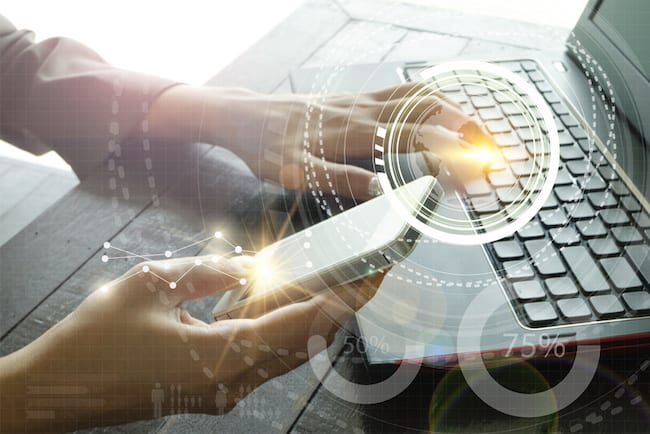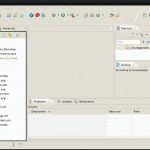
I have removed old content on this post that no longer worked and replaced it with options that work as of today. I will do my best to keep this post updated as technology changes. Thanks for visiting!
Note that this post refers to syncing Outlook for WINDOWS (all versions, as far as I can tell) with your iPhone. Microsoft offers (rather complicated) directions for syncing Outlook for Mac with iPhone. I can not speak to how well it works. These difficulties are a sample of the reason that I recommend AGAINST Outlook for Mac as a productivity solution. For other suggestions of productivity tools for Mac users, see this post and this post.
A question I get asked often by clients and others is how to sync the Task List in Microsoft Outlook with an iPhone.
The reason I frequently get this question is that I help busy professionals regain control over the flood of details that too often swamp their lives and work. I teach them my proprietary Empowered Productivity™ System—a collection of habits and behaviors (or “methodology”) that allows them to accomplish more in less time, with less stress.
Combine the Right Methodology with the Right Tools
This Empowered Productivity methodology is what I call a “workflow management system,” but you could also think of it as a “life-flow” management system, because it’s not applicable just to work, but to your personal life as well.
Once you understand the methodology, it’s most efficient if you can apply it to the technology tools you use every day for your productivity suite of apps, which should include at least email, calendar, tasks, notes, and contacts. For most of my clients, this is often Microsoft Outlook for Windows, and an Apple iPhone (although I offer training to teams using all kinds of different tools. It just seems that Outlook for Windows and iPhone are the most common).
As managing all the details of our life and work gets increasingly complicated, knowledge workers often find themselves turning to newer and better technology for help.
But, as I show in my training programs, the tools aren’t as important as the methodology. Once you have a methodology—a systematic process for managing everything—you can apply that methodology to most any tools. To understand this, consider that just like fancy clubs don’t make you a great golfer, fancy software doesn’t make you more productive. But once you become a great golfer, you’ll golf well with most any decent clubs.
Outlook: A Powerful Personal Information Manager
Microsoft Outlook for Windows is a comprehensive productivity tool in use by the majority of businesses I work with, although most users only take advantage of a small fraction of its capabilities. I used it myself to run my life for almost a decade. If you use it at work, it’s a great option for productivity that can easily handle the complexity of your life.
The technology has changed since I wrote the first version of this post, more than a decade ago (!), and I’ve updated it many times since then. Some of the comments below may be directed at prior content that has since been removed.

The Easiest Way to Sync Outlook Tasks on iPhone
If you’re running Microsoft Outlook for Windows on an Exchange server, or have an Office 365 subscription, you are probably already syncing your email, contacts, and calendar from Outlook to your iPhone. It’s easy to add Task syncing also. Once you enable it, your Outlook tasks will automatically sync to the Reminders app on your iPhone. Enable Outlook Task syncing by first setting up a free Outlook.com account if you don’t already have one. Then tap Settings on your iPhone, then tap “Passwords and Accounts.” Under “Accounts,” tap your Microsoft Outlook account and make sure the slider beside “Reminders” is green.
This will sync tasks from the Reminders app on the iPhone to Outlook, and from Outlook tasks to Reminders on the iPhone. This is a convenient option because it allows you to use Siri to create tasks, such as by saying, “Hey Siri, remind me to run payroll on Thursday at 10am.” You’ll then see the task listed in both your Outlook Task List and in Reminders on your iPhone, and the alert will appear (on Thursday at 10am) on both your computer running Outlook, and also as a push notification on your iPhone.
One note: in order for this to work, you need to change the “default list” in the Apple Reminders App. Do this by tapping Settings again on your iPhone. Scroll down to “Reminders.” Tap on “Default List,” and choose your preferred list under “Outlook.”
From an efficiency perspective, I do have a complaint about Apple’s Reminders app, however. Its biggest shortcoming is that one field does double-duty as the date a task is due and the date that you can receive a reminder (a push notification) about the task. This is awful! The date a task is due is definitely not the same as the date you want to be reminded of something, so these need to be two separate features.
An Alternative: Microsoft To Do
If that single “reminder date” field is a problem for you, or if there is another reason you’re not a fan of Apple’s Reminders app, a second to easily sync your Outlook tasks with your iPhone is to download Microsoft’s To Do app on your iPhone. Then in your iPhone Settings, you’ll still need to change your “Default List” in Reminders to a list in Outlook (see paragraph above). This will sync your Outlook Tasks in both Apple’s Reminder’s App and Microsoft’s To Do app on your iPhone.

Avoid The Problem of Syncing Outlook Tasks with iPhone Altogether
A third option allows you to avoid the problems of syncing Outlook Tasks to iPhone altogether, by choosing a different task list app to manage your tasks instead of Microsoft Outlook. Personally, I use and recommend Todoist.
Todoist is a third-party app that has a desktop version, a version for all smartphone platforms, and a version for all tablet platforms. Your tasks sync via Todoist’s cloud server, so when you enter a task on your desktop app, it syncs immediately to all of your devices. I find Todoist very intuitive and user-friendly.
But to reinforce my recommendation above, the app you choose to store your tasks matters less than the methodology you use to manage them. Begin implementing the Empowered Productivity System by downloading a free chapter of my book that details the process, Personal Productivity Secrets: Do what you never thought possible with your time and attention, and regain control of your life!
How to Increase Productivity By Using Tools the Right Way
Interested in learning more about how to use gadgets and tools productively? Want to regain at least an hour in your day, every day? Here are some of my other blog posts that can help you get back in the driver’s seat of your technology—and your life!
- What is Attention Management and How Can It Help You?
- Defining Productivity
- Not As Productive as You Could Be?
Check out my books to find more strategies like the ones in this post:
- “Personal Productivity Secrets“
- “Work Without Walls” (recommended for workplace leaders)
- “Attention Management“
Did You Sync Your Outlook Task List to Your iPhone? Share Your Results!
Please note that this technology regularly changes, and I will do my best to update this article again when necessary. If you try any of these options (or find a different solution) I would love to hear about your results! You can leave a comment below, or email me directly via my contact page.
[“source=maurathomas”]










